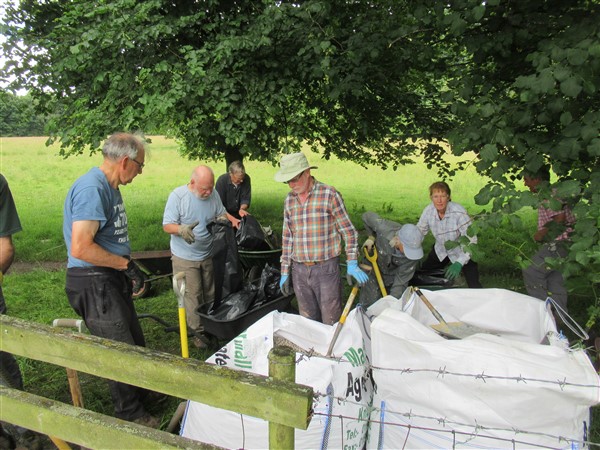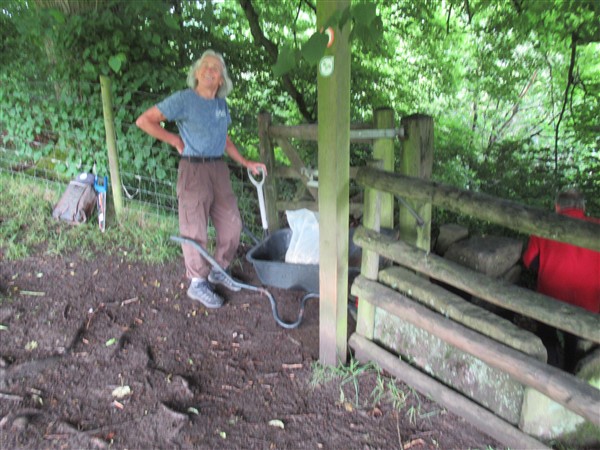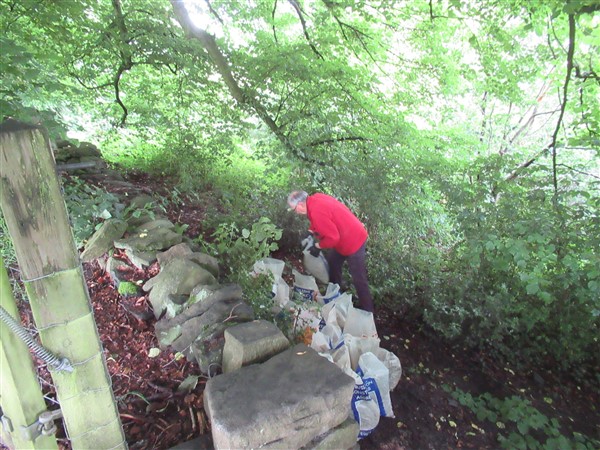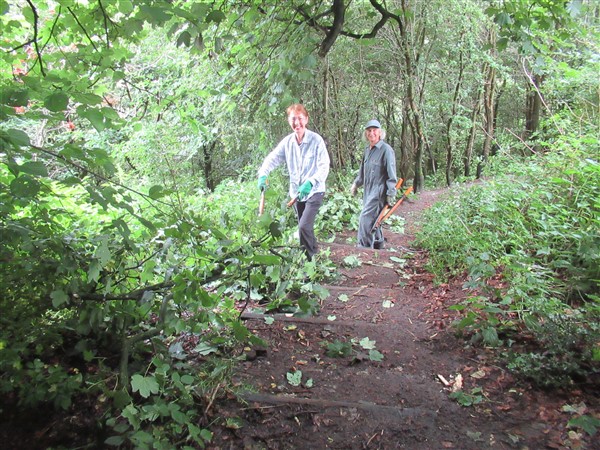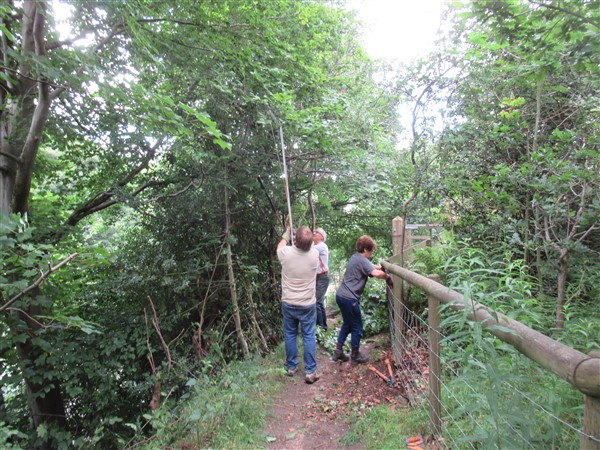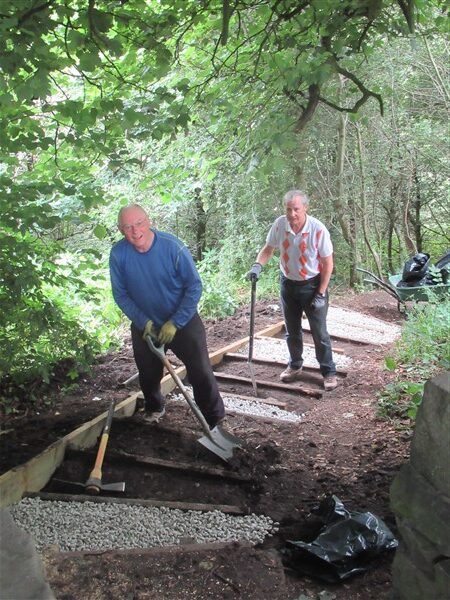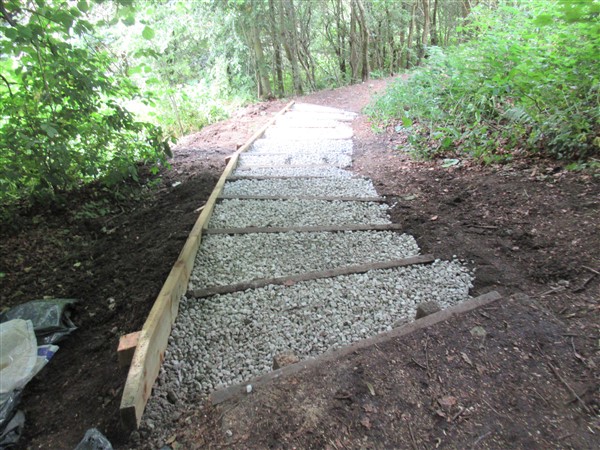ECR Footpath Projects Team was called upon to repair a series of flights of steps on Rainow FP 38 descending from the top field of Savio House lands down to Ingersley Vale. Timber and gravel materials were supplied and financed by CEC PROW.
In July 2021 four bulk bags of 20mm sized limestone ‘gravel’ were dropped on the field side of Savio House fenced private drive, as was some long 50 x 200mm planks. A high priority was given to clearing this field by emptying the bags into smaller managable bags for transport by wheelbarrow (100 metres) across the field to a far gate. Thence, through the gate, down four stone steps of a drystone retaining wall, to a stacking space by the wall, at the top of the stair flights in woodland. Very heavy work!
A team carried out vegetation clearance from the top gate and down as far as (but stopping at) a final series of stone steps contained between wooden hand railings (draped in decorative style low-voltage lighting units). Tree branches and encroaching bushes of holly, hawthorn, ash and bramble were substantially cut back.
Of the top flight of twelve wooden steps, four risers were replaced and the flight was strengthened on its downslope side with 50 x 200mm stringer planks, restrained by timber pegs (stobbs) at one metre intervals or less. The surface soil was removed from the step ‘goings’ and 20mm sized limestone gravel fill was placed on the full flight.
The next flight down held ten steps, of which four were replaced. The whole flight was similarly strengthened on the downslope side with a 50 x 200 side stringer. 20 mm sized limestone gravel surfacing was placed on the flight.
The third feature is a single step, now replaced and gravelled.
The next existing steps were formed as stone risers – slabs on end. We reduced their height difference by placing an intermediate wooden riser. A side wood stringer was built to strengthen the wood riser aned contain surface fill of 20 mm sized limestone along the full flight length. At this location, the slope fell away very steeply. To ensure the side timber has stability, raking long stakes were driven into the slope, under the board and path, and fixed to the board’s standard vertical wooden stobb restraints.
Nearer the lower section of path, a new flight of steps was built around a raised gully which formed a large and high obstructive step across the path. In this task some existing stone risers were interspersed with new timber risers and a gravel-retaining side timber installed with vertical stobb restraints. Additional long stakes were required alongside the steep side-slope adjacent to this boarding. As for the higher flight, they were driven raked, under the path, and nailed to the vertical restraining stobbs.
In all, approximately two tons of limestone gravel was spread on the step ‘goings’ to complete surfacing of the flights. 1.6 tons of bagged gravel was left stacked against the top wall for for their removal to the next two projects for this summer. The top gate’s latch was adjusted and the gate trimmed to achieve closer contact and thus enable easier closure of the gate.
I am pleased to thank Janet Allen, Melanie Davy, Roger Fielding, Adrian Flinn, Roger Jubb, Christine McKillop, Chris Munslow, Stephen Osborne, Graham Richmond, Micheal Tooze, Ian Wasson, Nick Wild and Alan Wilson for their enthusiastic support and results. 22 person-visits of men and women attending during these three days worked for 114 hours (excluding lunch breaks).
The land-owner, whilst somewhat concerned when we started, expressed her satisfaction with our works by gifting us a box of very nice cakes on Thursday morning!
.


